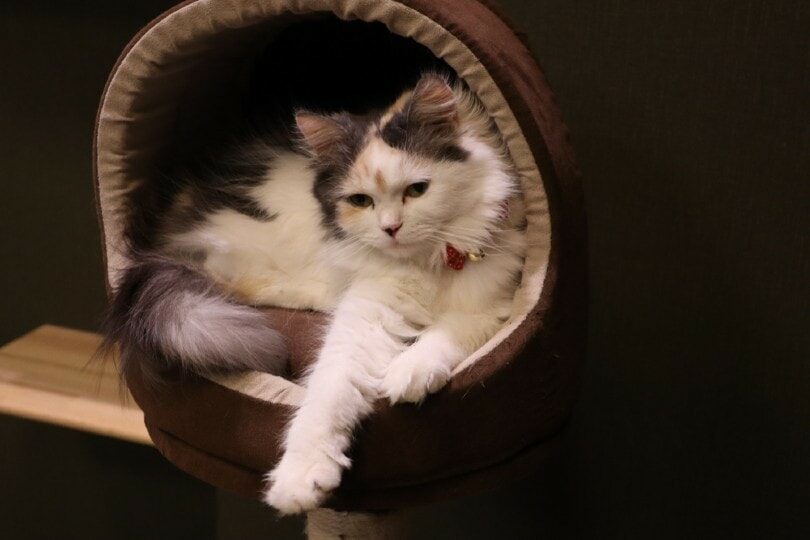How to Get Your Cat to Sleep in a New Bed in 4 Steps
By admin / December 16, 2022 / No Comments / Pet Dogs
So how do you entice your cat to slumber in her own bed? Here are some tips to encourage your pet to make use of the bed you bought just for her.
The 4 Steps for Getting Your Cat to Sleep in a New Bed
1. Make It Appealing

Transform your cat’s new bed into a comfy nestling area she can’t possibly resist. Sprinkle some fresh catnip on and around the bed to pique her interest and lure her into the bed. The catnips will encourage your cat to roll around and play in the bed.
Once your cat comes down from her catnip “high” and willingly curls up in her cat bed, give her a high-value treat. Never force your feline to sit or lie down in her bed. This will cause her to associate the bed with negative consequences.
You can also deck out the bed in your cat’s favorite scents. Try putting one of your old t-shirts in the bed and also spraying it with calming pheromones.
2. Select the Purr-fect Spot
If you position your cat’s new bed in an area she already enjoys sleeping in, she’ll be more inclined to use it. Try placing the cat bed on your sofa, the edge of your bed, or on your cat’s scratching post or cat tree. You could also try a sunny window where your cat can enjoy the warm rays of the sun.
Always ensure that your kitty’s new bed is in a quiet area away from noise and other pets. Elevating the bed will keep kids and dogs away from your napping cat.
3. Buy the Right Cat Bed

It may not seem like it, but cats are finicky when it comes to choosing the perfect spot to sleep in. It’s important that you pick a cat bed that appeals to your pet. Some traits of a good cat bed include:
- A bed large enough to accommodate her size, such as a flat, rectangular cat bed where she can stretch her body
- A bed with large sides to make her feel protected
- A heated cat bed that will ease the achy muscles of senior kitties
- Rounded, soft beds that your pet can “nest” in
If your budget allows, consider buying two different types of cat beds to see which one your pet likes the best.
4. Make Other Napping Spots Less Appealing

Discourage your cat from napping in other areas of the home by making them less desirable.
- Spray your couch or chairs with citrus oils, including lemon or orange
- Cover her favorite sleeping areas with upside-down plastic carpet runners or tin foil
- Put up gates to physically block your cat from accessing certain areas
If her typical napping areas aren’t appealing, your cat will be more inclined to use her new bed.
The Bottom Line on Cat Beds
Don’t get discouraged if your cat doesn’t use her new bed right off the bat. Lure her to the new bed with catnip and tasty treats. Place the bed in a low-traffic, serene location and pick a comfortable cat bed that caters to your pet’s size. Additionally, dissuade her from slumbering in other areas of your home.
With some time and patience, your cat will begin snoozing in the cat bed of her own accord.
Featured Image Credit: Africa Studio, Shutterstock
